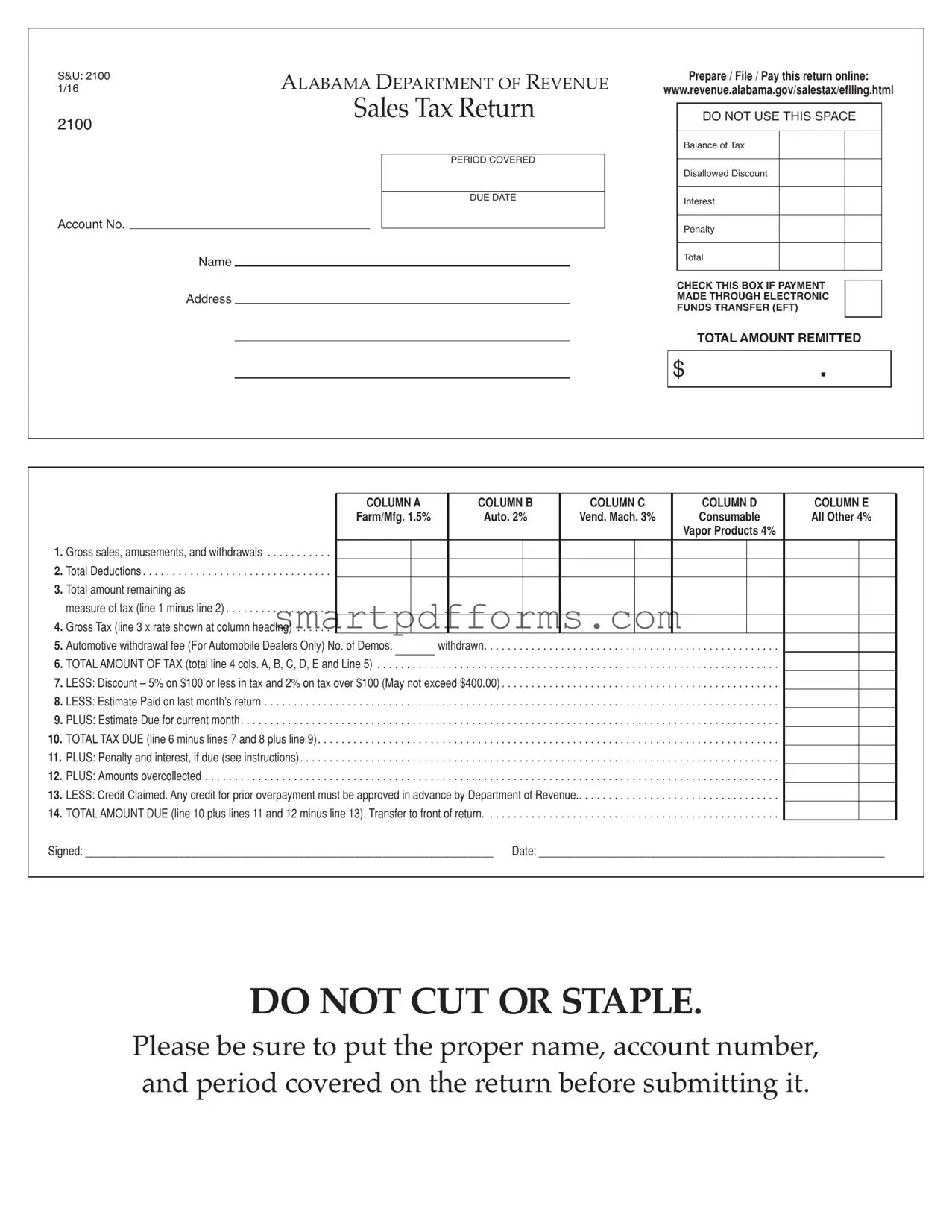The Alabama 2100 form is a crucial document for businesses within the state, serving as a comprehensive sales tax return that must be meticulously completed and submitted to the Alabama Department of Revenue. Enabling businesses to declare their taxes online through the Department's e-filing system, this form captures a wide array of sales activities, including but not limited to gross sales, amusements, and withdrawals across different tax rates for various categories such as farming, manufacturing, automotive, vending machines, consumables, and even vapor products. These categories are subject to differentiated tax rates, demonstrating the form's versatility in accommodating the diverse economic activities within Alabama. The form also allows for deductions, including discounts for promptly paying taxes and credits for overpaid amounts in previous periods. Additionally, it accounts for the calculation of penalties and interests in cases of overdue payments, ensuring businesses are fully aware of their fiscal responsibilities and the potential consequences of non-compliance. By providing spaces for essential details such as the tax period, business name, and account number, the Alabama 2100 form is a comprehensive tool designed to streamline the tax declaration process, simplifying the complex nature of financial reporting for Alabama's business community.

